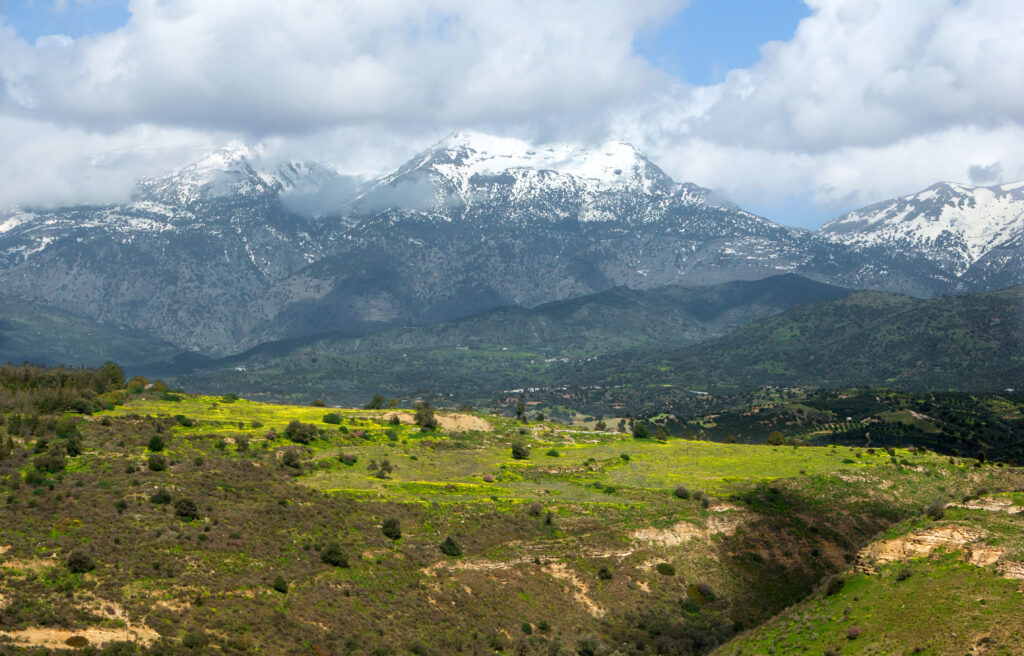The very first morning when we stopped at Troy, archaeologists were boarding up parts to begin further digging just outside the famous ruins. We learned a few days later from a newspaper headline that they’d just discovered unknown outer walls, revealing that Troy was seven times larger than originally believed. So despite what historians had long insisted to the contrary, Homer’s description in the Iliad had likely been accurate, of the Trojans’ ability to withstand the lengthy siege. Once again, historical facts supporting “myths” had popped up just in time to help out with my own myth-weaving in The Magic Circle, where I maintain that when it comes to ancient cultures myths are not only frequently the only history we have, but may also be closer to the truth than some scholars are willing to accept.

My next stop was Mount Ida, where in the myth explaining the start of the Trojan War, Paris’s judgment in a beauty contest was tainted when he accepted Aphrodite’s bribe of Helen, the most beautiful mortal woman, and he made his fateful decision to give Aphrodite (over Athena and Hera) the golden apple as the most beautiful goddess. Mount Ida was also famous as the spot where all the gods and goddesses perched as they monitored and meddled in the war’s progress.
As Karl and I drove toward the legendary mountain, it was late autumn and the plains and looming mountain in the distance were pretty much abandoned. I felt as if we were moving through a veil into the past, into the age of myth: all around us were those archetypal images so important to the many ancient cultures that had lived in these parts. Even the names were important.
Approaching Mount Ida we crossed the vast Halesian plain, hal being the ancient Celtic name for salt, where salt mines still operate today. Salt was once the most valued commodity on earth—the Romans paid their troops in it, hence our word salary—and it was also one of the three principal alchemical substances required for transformation from the earliest of times.
Then, beginning the mountain’s ascent, we found the lower slopes of mount Ida thick with vineyards—wine being the gift of the god Dionysus. And as we continued uphill, the mountain was blanketed with apple orchards—the apple being gift of the god Apollo. These two gods are connected because they shared rulership of Delphi, the principal Greek shrine, the rule of each beginning respectively, at the winter and summer solstices. So even today these two crops on Mt Ida reflect two of the most ancient symbols of transformation, the grapevine and the apple tree, symbolizing the “alchemical marriage” described in so many ancient texts—like the Song of Solomon, where the white king of the apple orchard joins with the dusky maiden of the vineyards, a transformation joining the symbols of spirit and matter, which is what The Magic Circle is all about.
Near the top of Mt Ida we found an abandoned picnic ground beside a spring-fed waterfall forming the brook that waters the rest of the mountain. The judgment of Paris took place just above such a sacred spring, so I started to drive up the gravel road that led around a curve toward what I believed would be the actual mountaintop. A major judgment error. Partway up, the unstable gravel degenerated into little more than a footpath that started to crumble under my tires. The car began to slip backward at an angle, sliding toward the cliff that dropped fifty feet or more to the waterfall below! At this angle, I could see nothing above or behind me.
Karl managed to crawl out on the passenger side, and he stood below yelling directions, as I carefully edged the car back around the blind curve of the precipice. Maybe it was only minutes, but it seemed hours before I was on the flat, the rear tire just inches from the waterfall. I drove back down to the apple orchard and got out; my legs were shaking so much I could barely stand. Karl and I hugged a lot, and we vowed in future we would leave sacred mountains to their own spiritual powers.
But we forgot this lesson a few years later when we were among those invited to central Turkey to see one of the oldest continually practiced alchemical transformations in action: the dervishes of Konya.